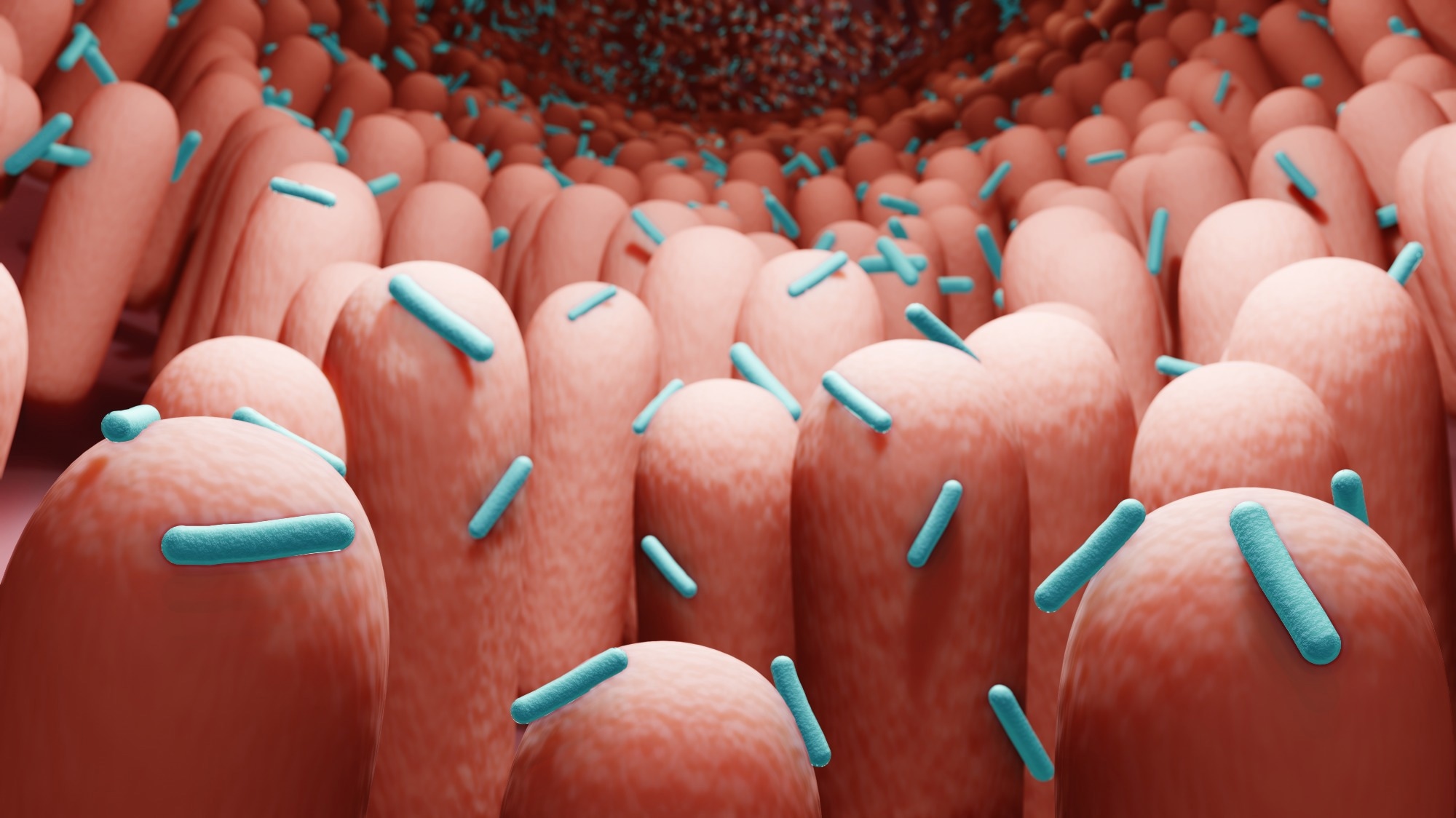In a recent study published in Cell Host & Microbe, researchers highlighted the role of lipids, especially bacteria-derived lipids in the gut microbiome, in mammalian physiology in the context of immunity and metabolism. Commensal fungal species also produce lipid metabolites.
 Study: Gut microbiome lipid metabolism and its impact on host physiology. Image Credit: ART-ur/Shutterstock
Study: Gut microbiome lipid metabolism and its impact on host physiology. Image Credit: ART-ur/Shutterstock
This review curated the most recent published literature challenging the old theories of how gut microbiome and host interact as a whole. They followed the conventional classification of lipids, an exclusionary class of biomolecules encompassing alkyl chain fatty acids and their derivatives found in the bacterial membrane bilayer.
The amount and types of lipids humans consume have dramatically altered in the past 50 to 100 years. So, the authors also addressed how lipid-mediated interactions could help rationalize the drastic surge in inflammatory and autoimmune diseases since the gut microbiome plays a crucial role in the pathogenesis of these diseases.
Finally, they highlighted the need for further work in this understudied but fascinating field area of biology.
Background
Earlier research found that lipids primarily played structural roles. e.g., in cell membrane. Also, they were crucial for microbial physiology and microbe-microbe interactions. However, recent studies have discerned a perplexing variety of lipid structures and functions, potentially impacting host physiology in health and disease.
Lipids, their biosynthesis, and transformation by the gut microbiome
Commensal gut microbes synthesize lipids through de novo biosynthesis and break down dietary lipids to generate secondary metabolites. These metabolites impact host health through their recognition by the immune system, thus, influencing numerous metabolic pathways.
Though much of the gut microbiome’s metabolic content (dry weight) comprises lipids, Escherichia coli have been the source of all information about gut bacterial lipid biosynthesis. With advancements in computational and machine learning approaches, researchers might have a more scalable method of lipid identification from other gut microbiome species, e.g., Bacteroidetes, Firmicutes, Verrucomicrobia, and Actinobacteria.
The common lipids in bacterial membranes include phospholipids, glycerolipids, and saccharolipids, such as lipopolysaccharides (LPS). However, some lipids are characteristic of specific bacterial species. For instance, commensal Bacteroidetes strains synthesize sphingolipids, such as dihydroceramide (DHCer). Likewise, some anaerobic gut bacterial species and Bacteroidetes and Firmicutes phyla species synthesize plasmalogens. In addition, some bacteria (e.g., Flavobacterium strains) synthesize sulfonolipids.
Each lipid class confers unique structural features and functions to the bacterial membrane. Some lipids also function as signaling molecules sensed by different host receptors, e.g., C-type lectin receptors (CLRs). For instance, humans receive exogenous sphingolipids through breast milk, an important determinant of brain development and immunity in the later stages of life.
Similarly, the gut microbiome transforms dietary cholesterol. Bacteroides sulfonate cholesterol using a gene cluster that harbors the sulfotransferase enzyme. Studies have shown a decrease in this specific gene cluster during gut inflammation. Since the biological functions of sulfated cholesterol metabolites from the microbiome are not understood completely, they represent an exciting area for future investigation. Also, the gut metagenome could more reliably explain cholesterol, cholesterol derivatives, and blood lipid panels of an individual, the most commonly utilized indicators of metabolic health.
Conclusions
Humans consume lipids through food throughout their lives. Eukaryotic cells can synthesize most lipids except linoleic and alpha-linolenic acids, precursors to omega-3 and omega-6 fatty acids. Thus, dietary lipids have several health benefits, e.g., cell regeneration, membrane stability, and maintenance of metabolic pathways.
However, studies have not yet deciphered lipids generated by gut microbiome enzymes and explained their impact on systemic inflammation. Besides gut, microbiome lipid metabolism may impact chronic inflammation in the brain, potentially resulting in many neurodegenerative diseases. Researchers are increasingly becoming interested in exploring whether Parkinson’s disease begins in the gut.
Since the human brain is also rich in sphingolipids and plasmalogens, two gut microbial products, future studies should also evaluate which microbial-derived lipids impact the gut-brain axis. Another area worth exploring is how gut microbiome-driven lipid metabolism is a critical determinant of human health and disease. Preliminary metabolomic profiling studies have revealed that the serum of healthy humans has thousands of bacteria-derived metabolites, many of which are possibly lipids.
Future efforts should focus on purifying microbiome metabolites and running them for tandem mass spectrometry analysis to generate shared databases. This data could inform strategies for the prevention, diagnosis, and treatment of several human diseases as a response to the lipids in human bodies and could help improve clinical outcomes. Individuals could also be subjected to deep metabolomic and genetic profiling to link metabolic signatures to microbiome populations.
Further, the scientists should work on developing a catalog of lipid profiles for microbes that correlate with health and disease. Understanding lipid-microbes and host-microbe interactions and genetic manipulation of microbial enzymes mediating lipid metabolism would also prove helpful, especially for bacterial taxa important for human health, e.g., Lachnospiraceae and Bifidobacteria strains.
Furthermore, there is an urgent need to understand outer membrane vesicle (OMV)-mediated lipid secretion and delivery. It could help develop resistance to viruses or other pathogenic invasions. The researchers emphasized considering the unique lipid fingerprints of gut microbes in future studies assessing human health and disease.